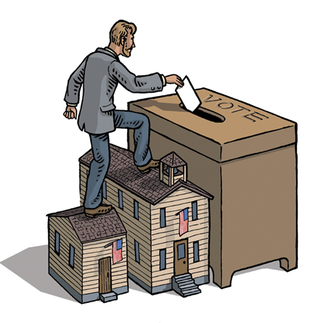
Gregory Nemec
A common theme in the telling of US history has been that widespread public education is important to the democratic foundations of the country. “Many thinkers in the early Republic feared that American democracy—which requires public participation—would not succeed unless citizens were taught how to think about the public good and the rights and responsibilities of a democratic society,” notes Kenneth Scheve, a professor of political science and global affairs. He and his colleagues wanted to study the relationship between state funding of education and greater participatory democracy in the 1800s.
In a paper published in the American Political Science Review, Scheve and coauthors examined what Scheve calls “a natural experiment.” They studied a set of towns in nineteenth-century New York state that were virtually demographically identical. New York had instituted common school legislation in 1812, with local control and a central state fund that allocated money to towns by population. However, some towns in the region were endowed with greater funding for primary school education, based on funds established when the area was settled. That funding meant, for instance, more schools per capita and longer school years.
In analyzing gubernatorial and presidential elections from the 1840s, the researchers found that in the towns receiving additional education funding, there was a three-percentage-point increase of eligible voters casting ballots. Townships that received more school funding also had higher median earnings and less earnings inequality.
“We see some indication that greater investment in public education is predictive of greater engagement in politics,” Scheve says. “While our current evidence is limited to New York state during a specific period, our findings support the view that maintaining democracy requires active investments by the state.”
 loading
loading